|
|
|
|
|
|
||
|
|
|
|
|
|
||

Dmitry Shamshur, Senior Researcher |
|
|
Goal: the study of the Influence of composition and In content on superconducting (SC) characteristics and low temperature conductivity of semiconductor compounds in the A4B6 systems.
Samples: Bulk polycrystalline samples (PbzSn1-z)1-xInxTe with grain size d ~ 100µ were prepared by the metaiocheramic technology*) with final homogenization annealing (600C, 200h). Composition variation: z = 0.5 - 0.9, x = 0.05 - 0.20.
Electron microprobe analysis did not reveal any trace of second phase. p-type conductivity; hole concentration: p = 5*1020 - 5*1021cm ; low hole mobility Rσ = 10 - 1 cm2/Vs due to the resonant hole scattering on impurity states. Excess Te (up to 6 at.%) was used to change Fermi level position related to the maximum of the impurity band (IB) density of states (DOS).
Experiment: T = 0.4 - 300 K (T = 0.4 - 3.2 K in the 3He set up). Magnetic fields up to 1.2 T. Four-probe method of measurements.
*) S.A. Nemov et. aL, Usp. Fiz. Nauk 168, 8, 817 (1998)
Energy band structure of PbTe-SnTe semiconducting compounds doped with In
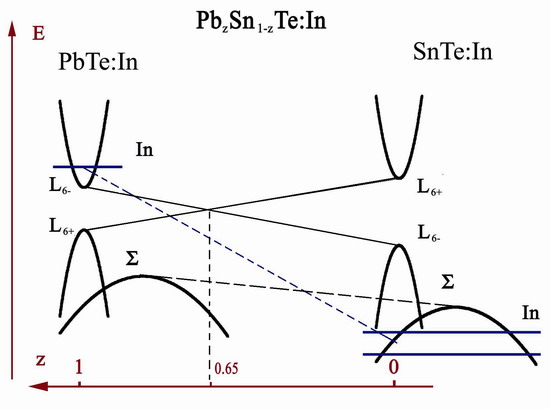
|
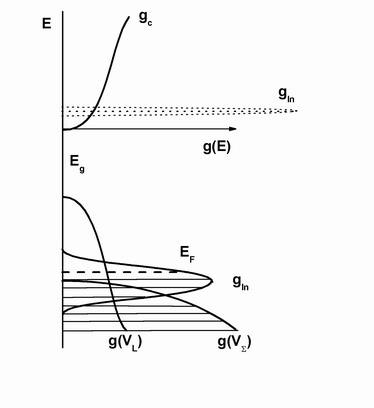
|
(Fig. a) - Spectrum exhibits an inversion of the energy band edge position L6- and L6+ (transition through the zero-gap state at z = 0.65) *)
• The In impurity level position is inside the conduction band (CB) for PbTe and deep inside in the valence band (VB) for SnTe *) on the background of VB with the high DOS, Fig. a, b
• Width of the In impurity band increases from about 1meV in PbTe to 200 meV in SnTe due to interaction between IB and two (L and S) VB states (Fig. b) **)
Superconducting transition in (Pb00.5Sn0.5)0.8In0.2τΕ
(resistance as a function of temperature and magnetic field at T<Tc).
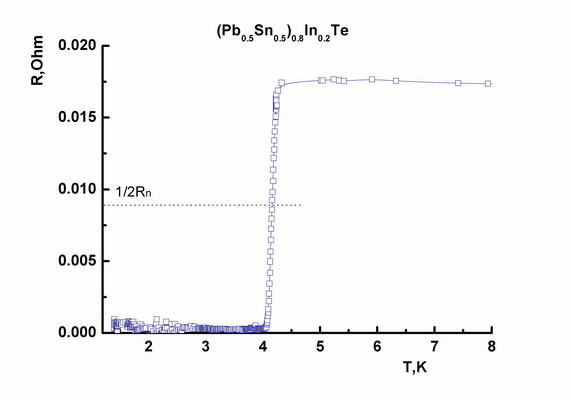 |
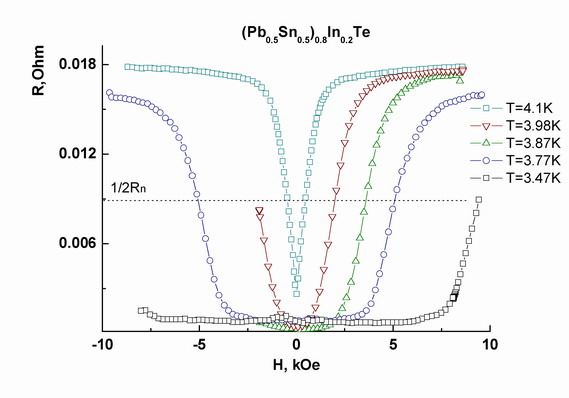 |
The critical parametres Tc and Hc2(T) were determined from the condition R=0.5RN (RN - normal resistance). Tc= 4.24K, dHc2/dT = -13.8kOe/K. The material is a typical type-II superconductor: the Ginsburg-Landau parameter is k = l/z = 75 *) and z(0) =(F0/2pHc2(0))1/2 = 100A for Hc2(0) = 55kOe (see the next fig.).
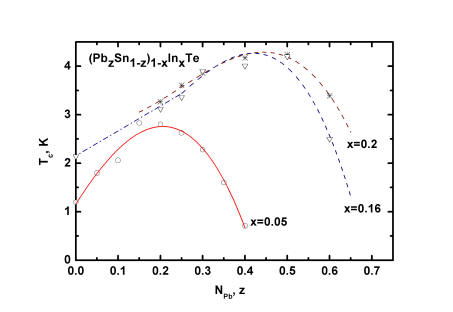 |
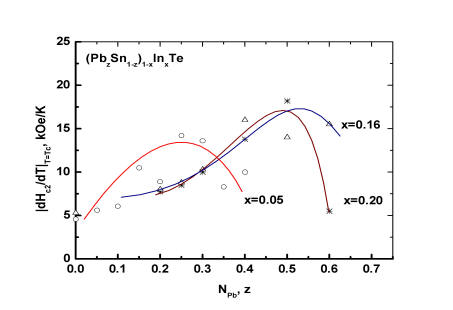 |
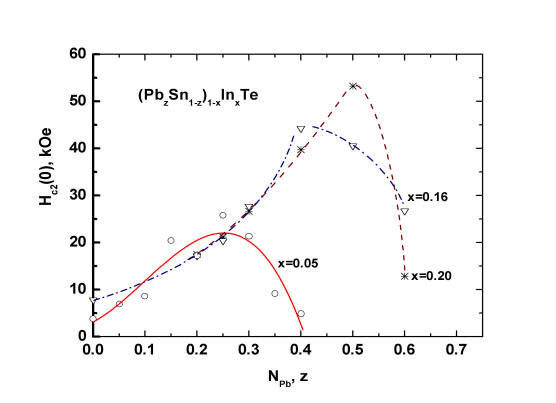 |
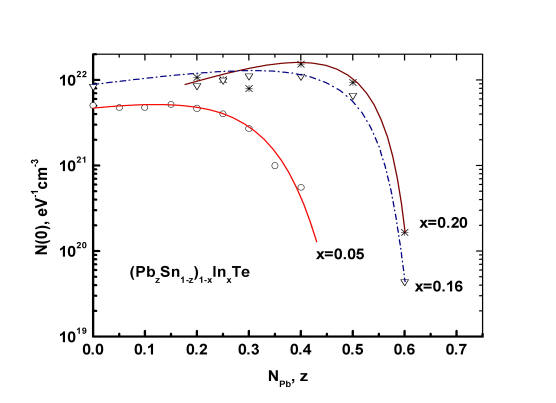 |
Composition dependencies of the SC transition parameters: the critical temperature Tc (a), temperature derivative of Hc2 near Tc (b), upper critical magnetic field Hc2(0) extrapolated to T=0 (c), and DOS at the Fermi level N(0) calculated using the relation N(0)=2.84x1014|dHc2/dT|Tcr N-1 (for “dirty” superconductors) (d).
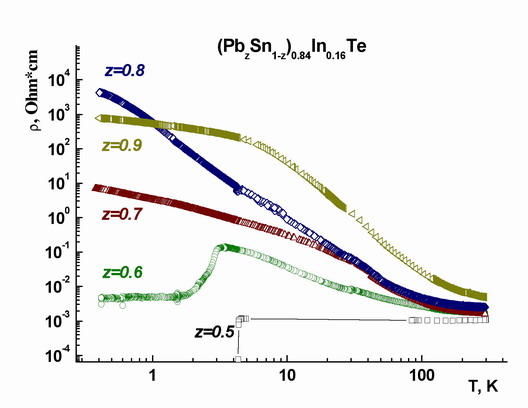 |
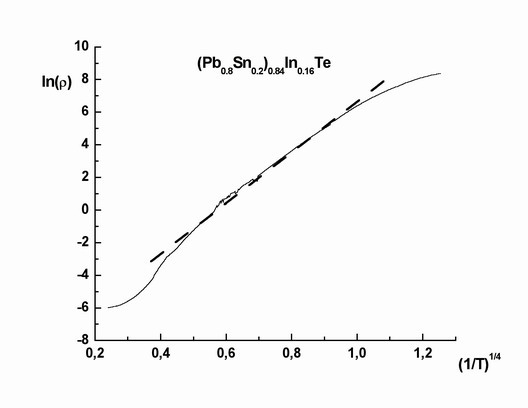 |
Temperature dependencies of magnetoresistivity in PbSnTe:In in the vicinity of the S-I transition
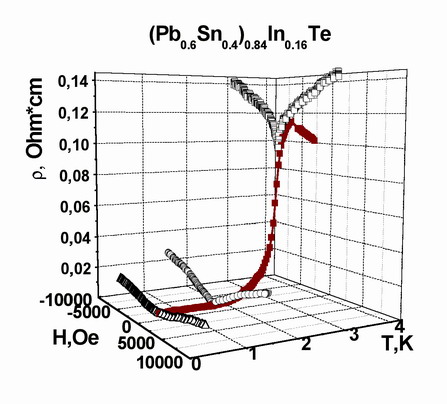 |
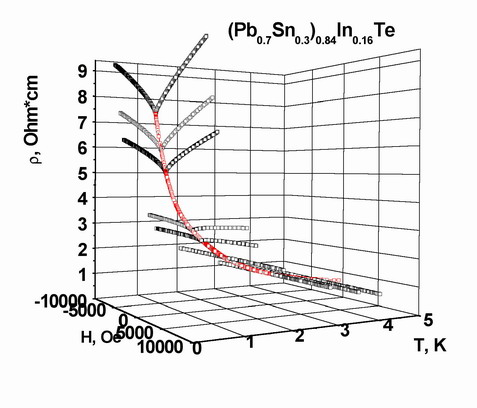 |
Fig.a. Fig. b.
Magnetic field dependencies of voltage –
current characteristics in (Pb0.6Sn0.4)0.84In0.16Te solid solution at T=1.2K and T=4.2K (H=0)
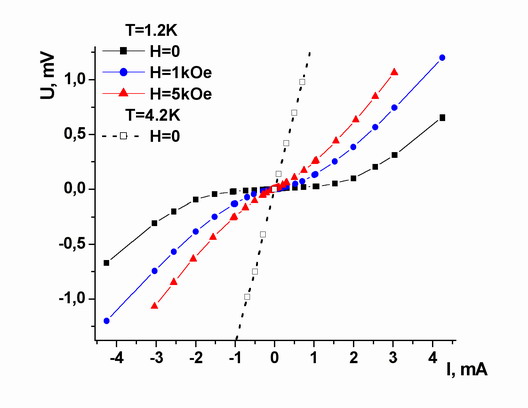 |
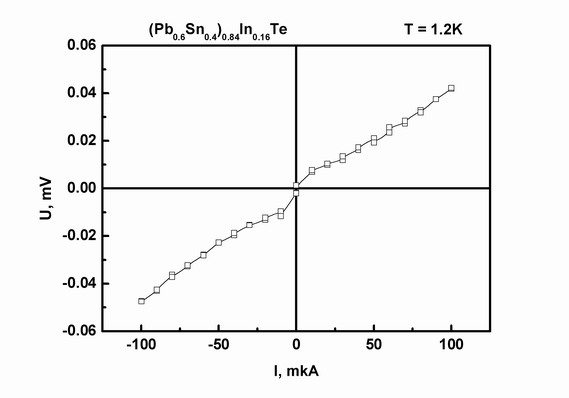 |
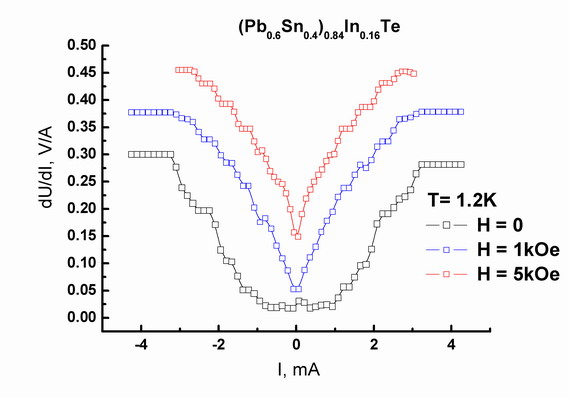 |
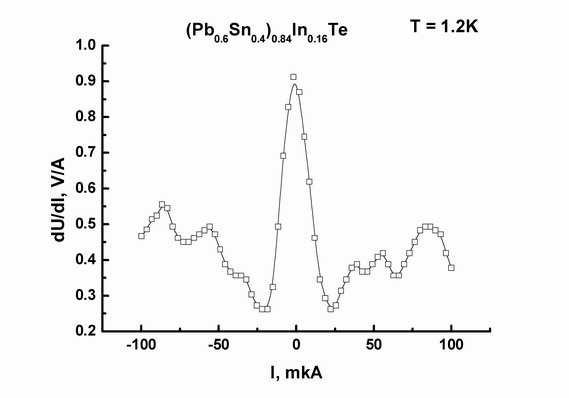 |
Transition between the semiconductor normal state and superconducting mesoscopic system near T = 1.7K
 |
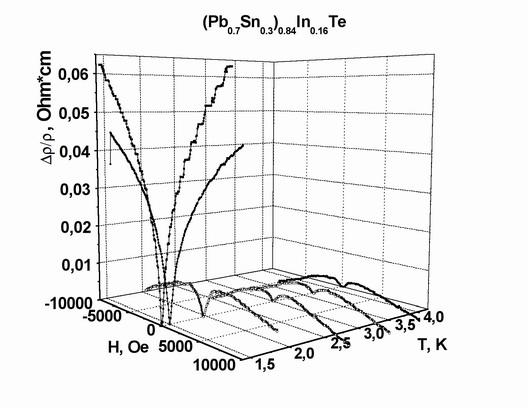 |
Anomalous magnetoresistance in PbSnTe:In in the vicinity of S-I transition
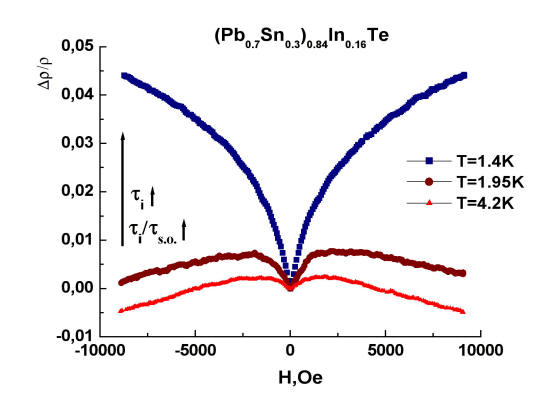 |
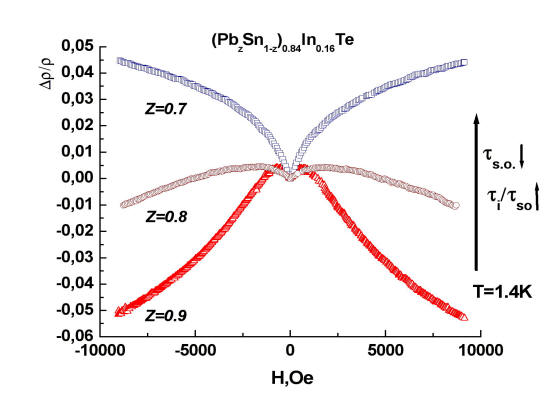 |
Fig.a. Z=0.7 Fig.b. Z=0.8
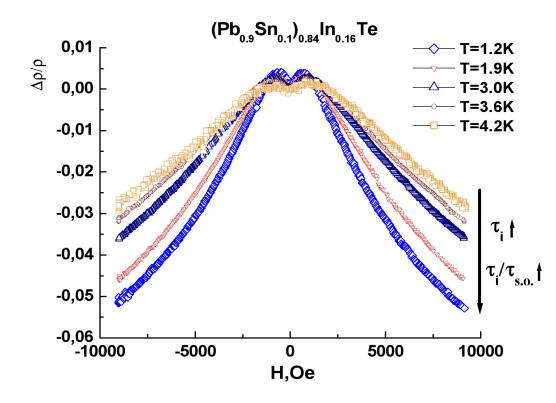 |
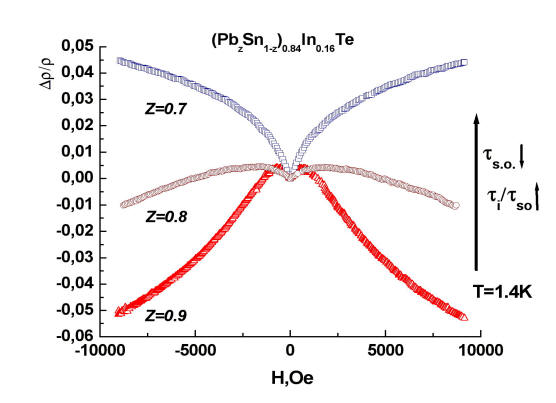 |
Fig.c. Z=0.9 Fig.d. T=1.4K
IVC investigations of PbSnTe:In compounds on the insulation side of S-I transition
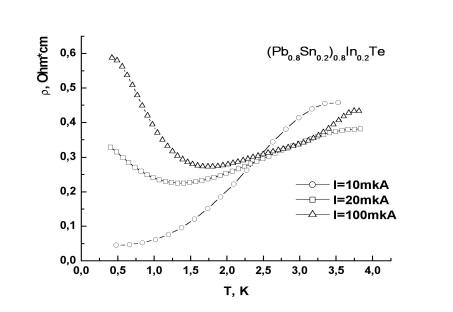 |
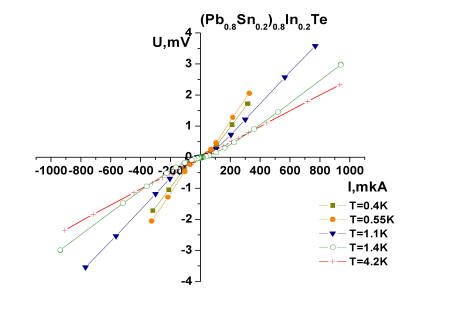 |
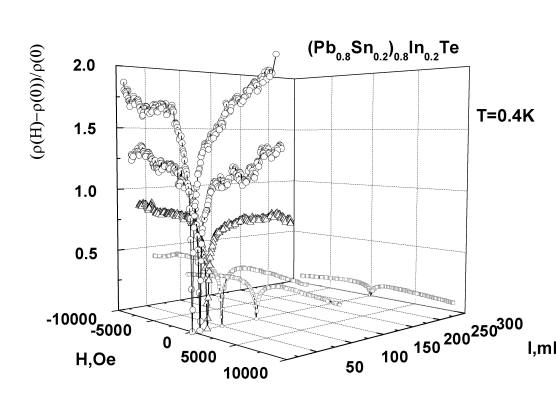 |
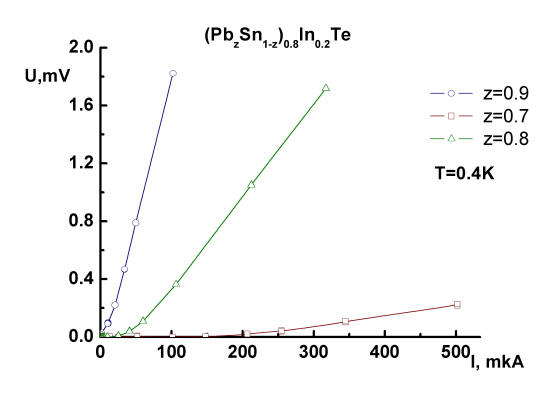 |
SC properties of bulk and thin films PbSnTe:In materials
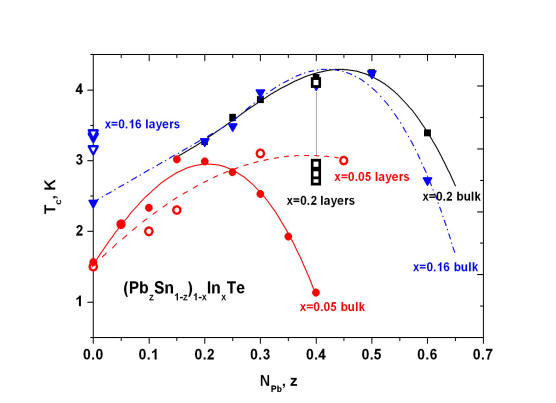
Conclusions